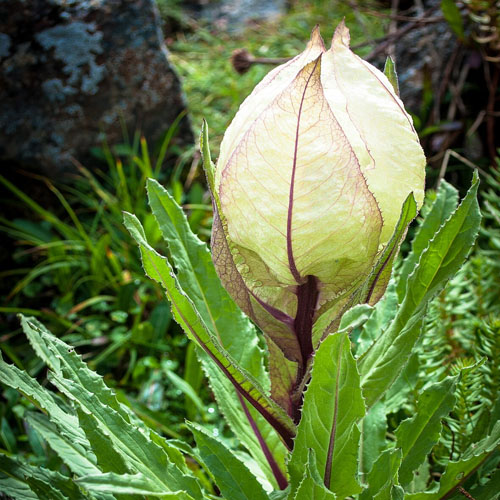Brahma Kamal
Brahma Kamal (Epiphyllum oxypetalum) is a highly revered plant in Indian culture, known for its stunning and large, fragrant flowers that bloom at night. It's often associated with spiritual and religious significance. Here's a detailed overview of Brahma Kamal:
Description:
- Botanical Name: Epiphyllum oxypetalum
- Common Names: Brahma Kamal, Queen of the Night, Night-Blooming Cactus
- Appearance: Brahma Kamal is a cactus species that grows as an epiphyte or terrestrial plant. It has flat, broad, segmented stems that resemble leaves and produces large, white, fragrant flowers. The flowers are typically 20-30 cm (8-12 inches) in diameter and bloom only at night, often opening around midnight and closing by dawn.
Symbolism:
- Cultural Significance: In Hindu culture, Brahma Kamal is associated with the deity Brahma, the creator of the universe. The flower's rare and beautiful night-blooming nature is seen as a symbol of purity and divine grace. It is often grown in temples and homes for its spiritual significance and as an offering to deities.
Growing Conditions:
- Climate: Brahma Kamal thrives in tropical and subtropical climates. It prefers warm temperatures and can tolerate cooler conditions but should be protected from frost.
- Soil: It grows best in well-draining soil. A cactus or succulent mix works well, as it helps prevent root rot and allows for proper drainage. The soil should be slightly acidic to neutral.
- Watering: The plant is drought-tolerant but requires regular watering during the growing season. Allow the soil to dry out slightly between waterings. Reduce watering in the winter when the plant is not actively growing.
Cultivation:
- Propagation: Brahma Kamal can be propagated from stem cuttings or by division. To propagate from cuttings, take a healthy segment of the stem, let it dry for a few days, and then plant it in well-draining soil. For division, separate established clumps into smaller sections and replant them.
- Planting: Plant the cactus in a pot with good drainage or in a garden bed with well-draining soil. It can be grown indoors or outdoors, depending on the climate and conditions.
- Maintenance: Regularly remove any dead or damaged stems.


